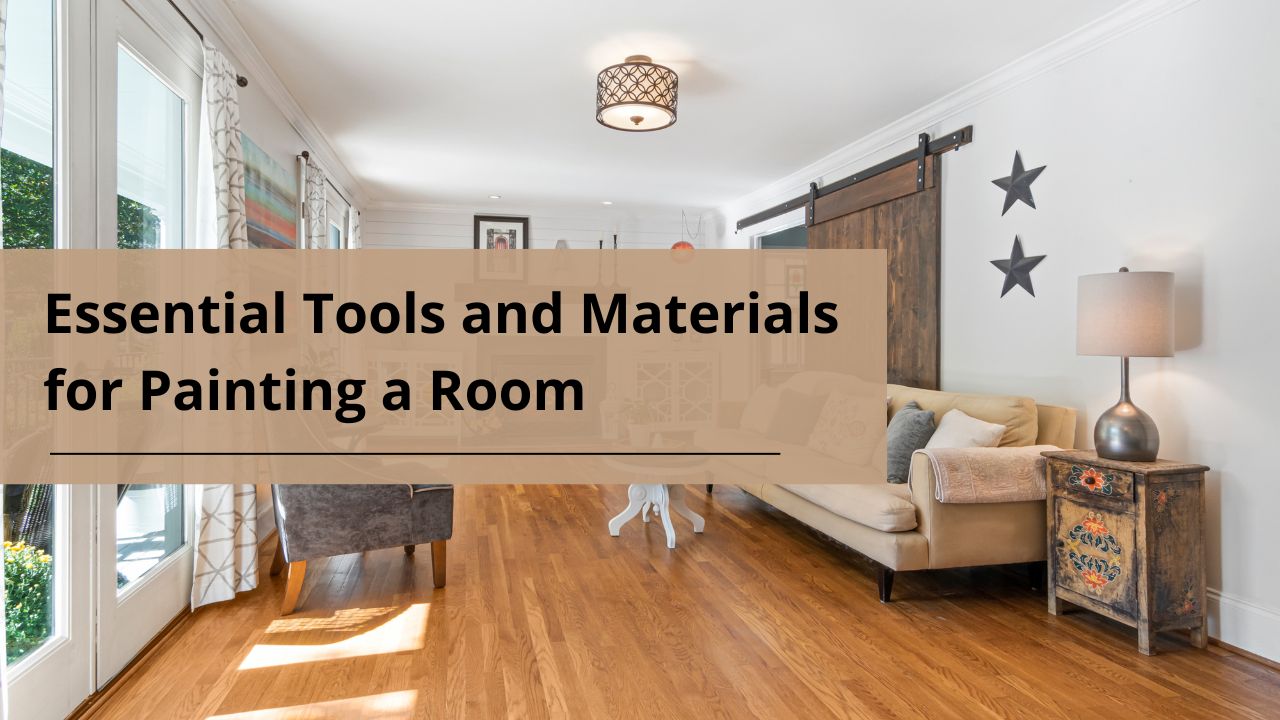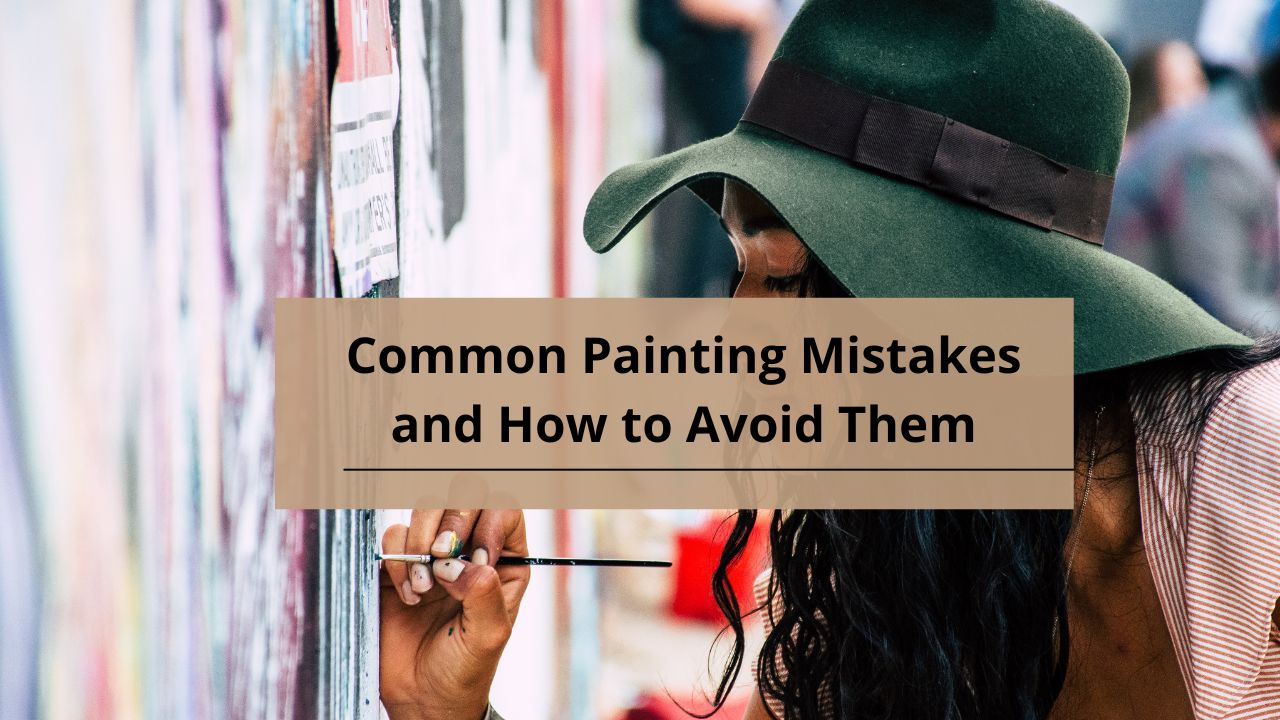When it comes to painting a room, having the right tools and materials can make all the difference between a professional-looking finish and a project that feels like it’s gone awry. Proper preparation and choosing the right equipment not only ensure that your painting job looks great but also make the process smoother and more enjoyable. Let’s dive into the essential tools and materials you’ll need to get started on your next painting project.
Preparing Your Space
Protective Gear
Before you even touch a paintbrush, it’s crucial to protect your space from spills and splatters.
- Drop Cloths: These are your first line of defense against paint drips. Use them to cover floors and furniture. For best results, choose heavy-duty cloths or plastic sheeting that can handle the mess.
- Painter’s Tape: This helps you achieve clean, crisp lines on edges where you don’t want paint. Apply it around trim, windows, and door frames to keep paint where it belongs.
Surface Preparation Tools
Preparation is key to a flawless finish.
- Spackling Paste and Putty Knives: Fill in any holes or cracks in your walls with spackling paste. Use a putty knife to apply and smooth it out.
- Sandpaper and Sanding Blocks: Once your spackling paste is dry, sand the area smooth. This ensures a uniform surface for painting and helps paint adhere better.
Choosing the Right Paint
Types of Paint
Understanding the types of paint will help you choose the best one for your project.
- Latex vs. Oil-Based Paints: Latex paints are water-based, dry quickly, and are easy to clean up. Oil-based paints offer a durable finish but take longer to dry and require solvents for cleanup.
- Gloss, Semi-Gloss, and Matte Finishes: Glossy finishes are durable and easy to clean, making them ideal for high-traffic areas. Matte finishes hide imperfections but are less washable. Semi-gloss provides a balance between durability and appearance.
Paint Supplies
The right supplies are essential for applying paint effectively.
- Paint Brushes: Invest in high-quality brushes for precise application, especially for detailed work. Different sizes and shapes are suited for different tasks, such as cutting in or painting trim.
- Paint Rollers and Trays: Rollers are great for covering large areas quickly. A tray allows you to load your roller with paint and control the amount applied.
Painting Tools
Brushes
- Types and Sizes: Choose brushes based on the area you’re painting. Angled brushes are perfect for corners and edges, while flat brushes are better for broad surfaces.
- How to Choose the Right Brush: Consider the paint type and the surface texture. Synthetic brushes work well with latex paints, while natural bristles are best for oil-based paints.
Rollers
- Roller Covers and Frames: Roller covers come in various materials and nap lengths. Short nap rollers are best for smooth surfaces, while long nap rollers are suited for textured walls.
- Choosing the Correct Nap Length: Match the nap length to the texture of your wall to achieve even coverage and reduce roller marks.
Paint Sprayers
- Pros and Cons of Paint Sprayers: Paint sprayers can cover large areas quickly and provide a smooth finish, but they require more setup and cleanup and are less precise than brushes or rollers.
- When to Use a Paint Sprayer: Consider using a sprayer for large, open spaces or when applying a special finish, but keep in mind the extra preparation needed to protect surrounding areas.
Application Accessories
Paint Trays and Liners
Paint trays hold the paint and allow for even distribution on your roller. Liners can be used for easy cleanup and to prolong the life of your trays.
Extension Poles
Extension poles attach to your paint roller to reach high walls and ceilings without the need for a ladder. They make painting large areas more efficient and less tiring.
Ladders and Step Stools
Use ladders and step stools to reach high areas safely. Ensure they are stable and positioned correctly to avoid accidents.
Cleaning and Maintenance Tools
Paint Clean-Up Supplies
- Paint Thinners and Solvents: Essential for cleaning brushes and rollers if you’re using oil-based paints. Follow the manufacturer’s instructions for proper disposal.
- Cleaning Brushes and Rollers: Rinse your tools immediately after use to prevent paint from drying and ruining them.
Storage Solutions
- Paint Storage Containers: Store leftover paint in airtight containers to prevent it from drying out. Label the containers with the color and finish for future reference.
Safety Considerations
Ventilation
Ensure proper ventilation by opening windows and using fans to circulate air. This helps dissipate fumes and speeds up the drying process.
Proper Handling of Paint Products
Follow safety instructions on paint cans, wear protective gear, and avoid inhaling fumes. Always store paint products safely out of reach of children and pets.
Conclusion
Having the right tools and materials for painting a room can make the process more efficient and enjoyable. From preparing your space and choosing the right paint to using the right application tools and ensuring safety, each step is crucial for achieving a professional finish. With the right preparation and equipment, you can transform your space with ease and confidence.
FAQs
1. What’s the difference between a flat and glossy paint finish?
Flat finishes are matte and good for hiding imperfections, while glossy finishes are shiny and more durable, ideal for high-traffic areas.
2. How do I properly clean my painting tools?
Clean brushes and rollers with the appropriate solvent or water immediately after use. Rinse thoroughly and let them dry completely before storing.
3. Can I use the same paint for walls and ceilings?
While you can use the same paint, it’s often better to use a ceiling paint that’s designed to be less reflective and better suited for ceilings.
4. How do I choose the right brush for trim work?
For trim work, use a high-quality angled brush for precision. The size should be comfortable for your hand and suited to the width of the trim.
5. What should I do if I get paint on my carpet?
Act quickly to blot the paint with a clean cloth. For water-based paints, use water and soap to clean the area. For oil-based paints, you may need a solvent


